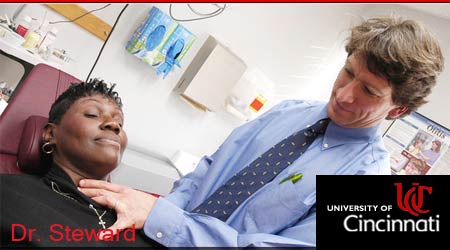January has been credited as the Thyroid Awareness Month. This is the perfect time for everybody to get their thyroid glands tested to avoid the onset on any gland complications.
The thyroid gland makes and stores hormones that monitor an individual’s blood pressure, heart rate, body temperature and even the rate at which food gets converted to energy. Thyroid gland disorders include underactive or overactive thyroid, enlarged thyroid or may be even cancer.
David Steward, MD, an associate professor in the otolaryngology department, University of Cincinnati College of Medicine, says that underactive thyroid or hypothyroidism sufferers may experience tiredness, weight gain or a feeling of chilliness. He further says that these symptoms may be the causal factor of many diseases, thus a frequent thyroid test is recommended in order to prevent the development of any disease. He continues, “It’s a very simple blood test, and for patients with those symptoms it’s the first test we give. If it comes back normal, we can rule the thyroid out as the problem.â€
According to Steward an overactive thyroid includes blatant symptoms like feeling irregular or fast heartbeats, weight loss, feeling anxious or jittery. There are various treatments available for these disorders. Underactive thyroid can be treated through the use of synthetic thyroid hormone levothyroxine. The appropriate medication dosage is determined after blood test monitoring. This medication is to be taken in the pill form.
Overactive thyroid, on the other hand, is much more complex than underactive thyroid. Treatment for this may require surgery, drugs or radioactive iodine. Steward suggests patients to discuss the most appropriate mode of treatment with their endocrinologist.
As far as cancer is concerned, Steward recommends the patient to feel their lower neck, under their Adam’s apple, in search for any nodules in the thyroid. This is called palpation. He says, “A generation ago, we relied almost exclusively on palpation so a cancer had to be pretty big to be discovered. Now, with ultrasound, we can find cancers one centimeter or smaller.â€
Steward states that those people having huge nodules on ultrasound can opt for ultrasound-guided fine needle biopsy to rule out malignancy. Having said this, he also states that nodules are benign most of the time.

